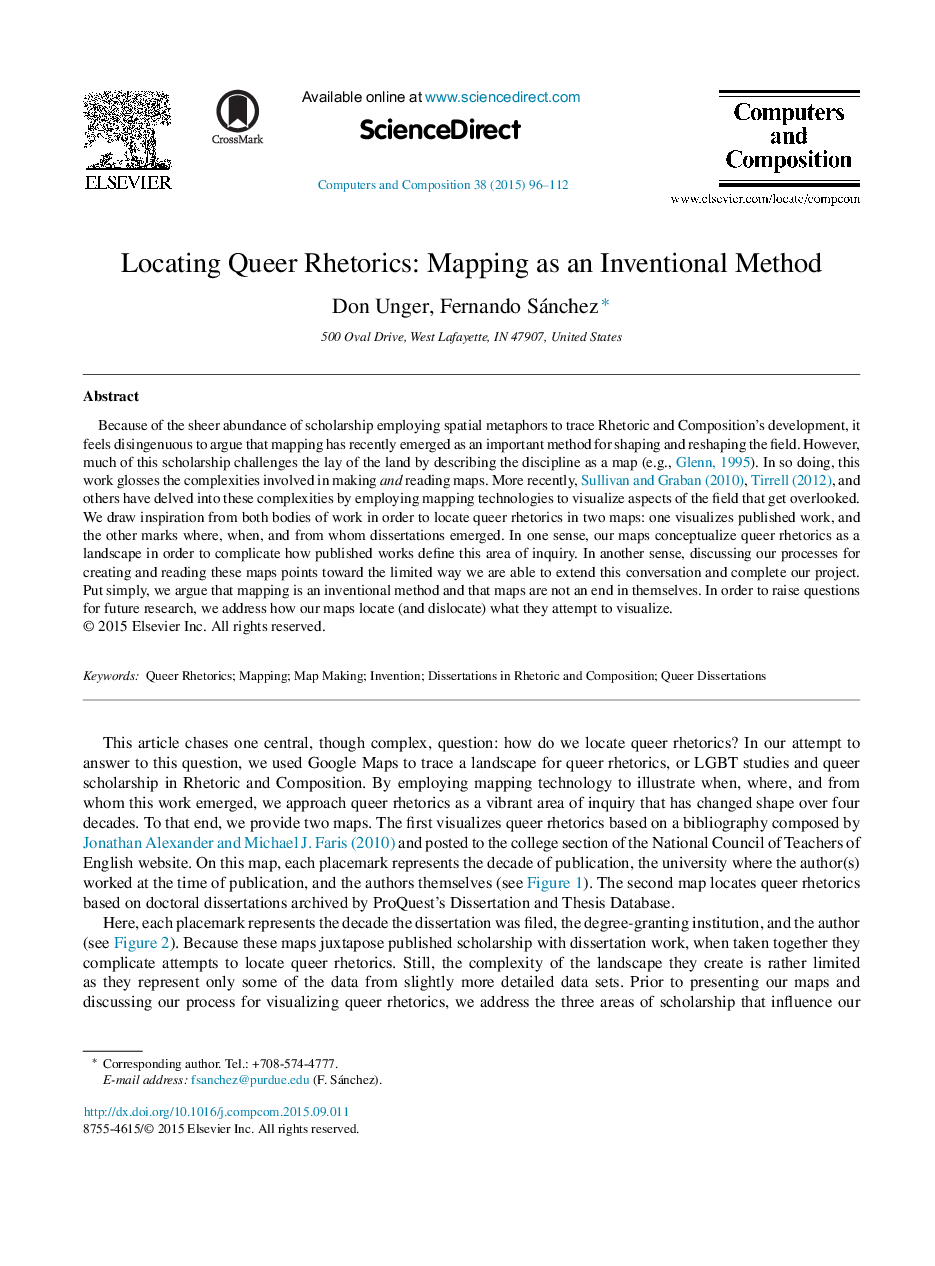| Article ID | Journal | Published Year | Pages | File Type |
|---|---|---|---|---|
| 347734 | Computers and Composition | 2015 | 17 Pages |
Because of the sheer abundance of scholarship employing spatial metaphors to trace Rhetoric and Composition's development, it feels disingenuous to argue that mapping has recently emerged as an important method for shaping and reshaping the field. However, much of this scholarship challenges the lay of the land by describing the discipline as a map (e.g., Glenn, 1995). In so doing, this work glosses the complexities involved in making and reading maps. More recently, Sullivan and Graban (2010), Tirrell (2012), and others have delved into these complexities by employing mapping technologies to visualize aspects of the field that get overlooked. We draw inspiration from both bodies of work in order to locate queer rhetorics in two maps: one visualizes published work, and the other marks where, when, and from whom dissertations emerged. In one sense, our maps conceptualize queer rhetorics as a landscape in order to complicate how published works define this area of inquiry. In another sense, discussing our processes for creating and reading these maps points toward the limited way we are able to extend this conversation and complete our project. Put simply, we argue that mapping is an inventional method and that maps are not an end in themselves. In order to raise questions for future research, we address how our maps locate (and dislocate) what they attempt to visualize.
